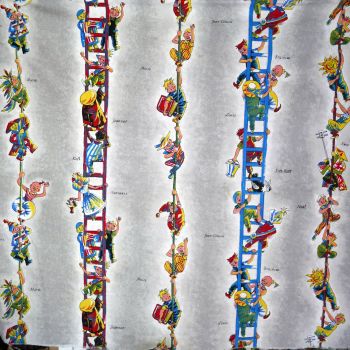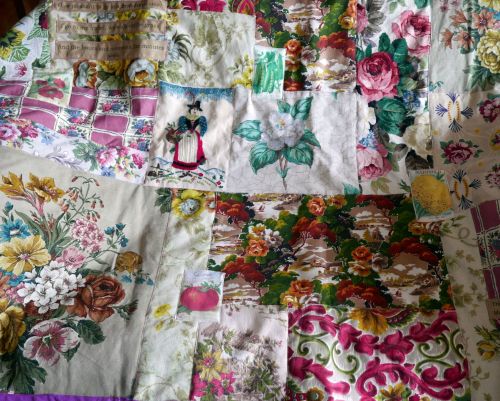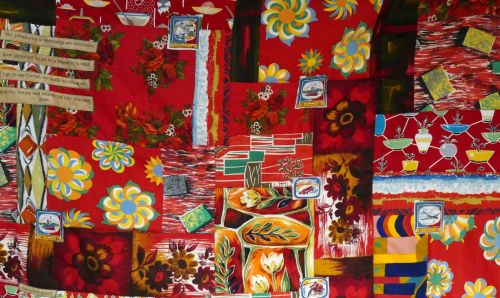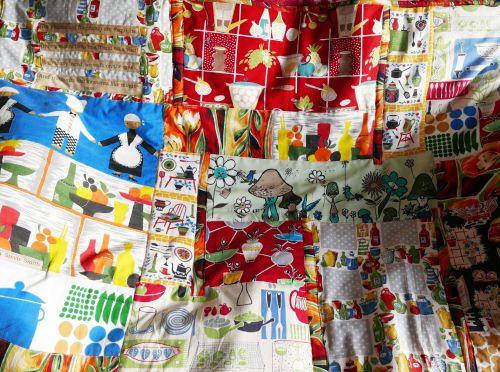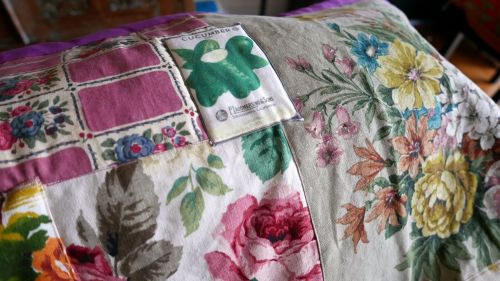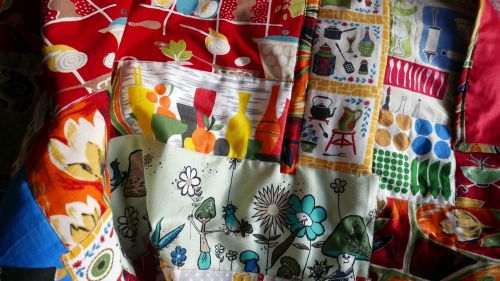Fabric Detection - Josephine Baker & The Rainbow Children
Posted on
I’m often asked where I find my fabrics and how I know what they are. I find them...everywhere. Auctions, markets, attics, lovely people who email and ask if I want to buy them, family members turning out airing cupboards, other dealers…
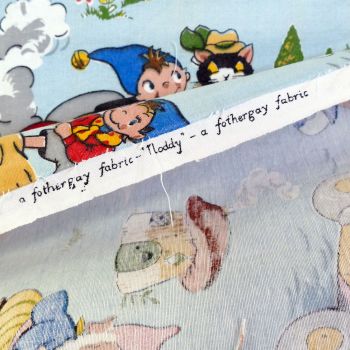
The answer to the second question is more complicated. Sometimes it’s straightforward, so if I have some Noddy fabric and it has a printed selvedge then I follow the trail. Let’s say it’s a Fothergay print, I can research Fothergay – when were they operating? What licenses did they have? Which Blyton artist was illustrating Noddy at that time and have they done the illustrations? You get the idea. It can be time consuming but it's often rewarding. Occasionally though, I get stuck and then the fabric becomes a bit of an enigma.
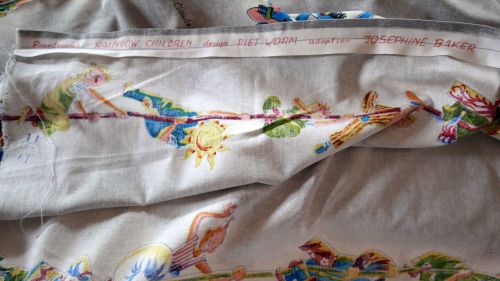
I bought some vintage linen a while ago because I loved it (see previous entries – this happens often). The fabric is glorious and slightly odd, but it was the marks on the selvedge that really intrigued me.
“Prentedoek – RAINBOW CHILDREN - design – PIET WORM – adoption – JOSEPHINE BAKER”
The print shows children of various nationalities climbing ladders. Looking at the design there are 25 different images of children shown as a repeating pattern, but only 11 children’s names – intriguing.
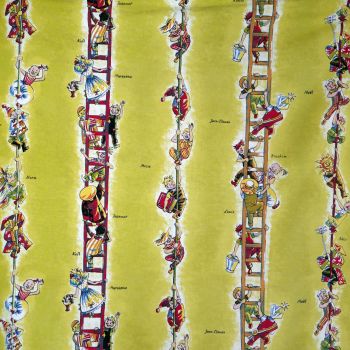
I start with trying to pin down where it's come from, Prentedoek and the name Piet Worm sounded like words from the Netherlands to me and so it proves. Google translate helpfully offers “princess cloth” or “printed cloth” for Prentedoek and I plump for the latter. Piet Worm was a well-known Dutch illustrator of childrens’ books including one, which comes up again and again, called The Rainbow Children ("tribu arc-en-ciel") written by Josephine Baker. Now I'm even more intrigued...is it really the Josephine Baker? What is she doing with her name on some children's fabric?
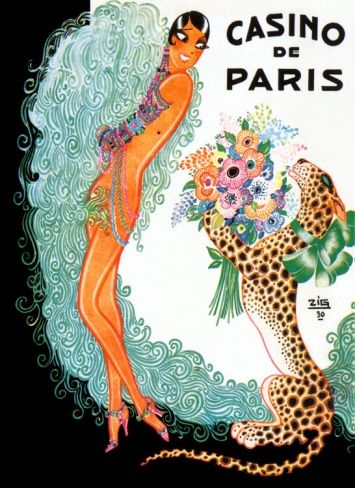 (picture credit: Louis Gaudin - Casino de Paris - Josephine Baker - 1930)
(picture credit: Louis Gaudin - Casino de Paris - Josephine Baker - 1930)
This sends me into a whole new world of interest because, although I knew that Josephine Baker was a celebrated dancer, singer and Cheetah owner, amongst many other things, I had no idea that she also adopted 12 children from around the world. She housed them in her castle in the Dordogne, the Chateau Milandes, and named them, The Rainbow Children. Baker's work with the Civil Rights movement in the 1950's started her idea for a family that she called the Rainbow Tribe. She wanted to prove that, "children of different ethnicities and religions could still be brothers." The outcome of her plan was to be complex and not without flaws but it makes fascinating reading.
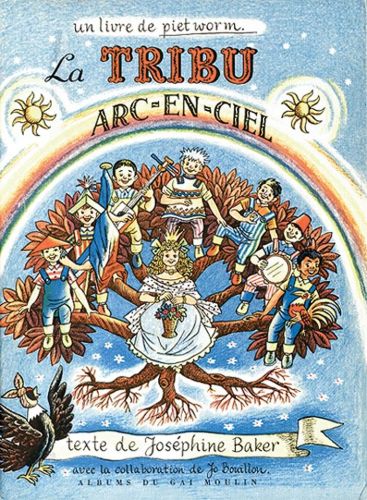
And so we have the answer to the design. These are the children depicted on the ladders, with their names and the costumes that tie them to their countries of origin. Some are shown twice, in different outfits so that accounts for the fact that there are 25. But Josephine adopted 12 children in all and there are only 11 here. My best guess is that this was printed before Stellina, the final child to be adopted, was added to the family in the mid-sixties. Since the penultimate adoption happened in 1959/60, this means I can date the fabric to between 1960 – 1965. So far, so good.
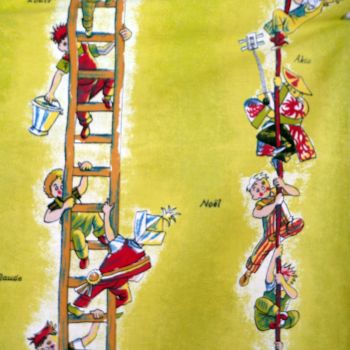
My next question is who printed it and why? Is it a spin-off from the book? Was it made for commercial use or just for the chateau? So far it’s a blank. I’ve asked the Textile Museum of the Netherlands and they have no record of it and no knowledge. I’ve found similar prints by another well-known Dutch illustrator of the time produced by a firm called Dehnert & Jansen, but they are long gone so I’ve no way of checking. Google searches only bring up the book, never fabric and I can’t find any other records of this design. I’ve hit a wall.
The hunt goes on…
Needless to say, if you know anything about this fabric please get in touch!
